
Harvey Performance Company is a global leader in precision cutting tools, manufacturing brands like Harvey Tool, Helical Solutions, Micro 100, and others used in aerospace, medical, power generation, electronics, and more. Their promise to customers is simple but demanding: the right tool, in stock, when you need it - backed by expert support.
Delivering on that promise requires one of the most complex manufacturing and supply chains in the industry. Tens of thousands of SKUs, high-mix/low-volume production, and world-class service levels all depend on one thing: the ability to execute the production plan.
At Harvey’s Meridian, Idaho facility - home to advanced CNC grinding cells, micro tooling, and lights-out automation - that execution challenge came into sharp focus. The plant’s success is measured by schedule attainment: are they completing the jobs they planned for the week, on the machines they planned to run them on?
This article discusses how Harvey Performance used MachineMetrics Intelligent MES to close the execution gap between ERP plans and shop-floor reality, dramatically improving schedule attainment in the process.
The Execution Gap: When ERP Plans Don’t Match Reality
Harvey’s ERP system (Epicor Kinetic) generated a production plan based on existing data and estimates: what to run, where, and when. However, the reality on the shop floor often told a different story.
1. Delayed, Inaccurate Data
Labor and production reporting relied on manual entry at shared ERP terminals. Operators would record work and quantities at the end of a shift - or even the next day. Data was often 8–10 hours old by the time anyone could see it.
Supervisors spent an hour or more each morning editing labor tickets just to make the information usable. Because of this lag and rework, trust in ERP data was low. By the time the team realized a job was behind or off-standard, the window to recover the schedule had usually closed.
2. Scheduling on Estimates Instead of Reality
Router standards and cycle times had been built over years through legacy data and educated guesses. They didn’t consistently reflect how long work actually took on specific machines with specific setups.
That meant schedules were built on inaccurate cycle times. Jobs planned for three hours might regularly consume five. Setups varied wildly from the assumptions in the routing. As a result, capacity looked fine on paper but broke down in execution, making true schedule attainment difficult to measure and even harder to improve.
3. A DIY MES That Couldn’t Scale
Harvey tried to solve this challenge by building a homegrown MES: connecting directly to CNC controls, collecting machine signals, and attempting to tie that data to ERP jobs.
It worked in pockets, but maintaining it quickly became a full-time software project. Every new machine, control, or OEM required custom work. Normalizing raw machine data and keeping it aligned with job context in Epicor was complex and brittle. The effort proved the initial value of real-time data, but showed clearly that building and maintaining a full MES internally wasn’t sustainable.
Harvey needed more than a basic machine monitoring solution. They needed a way to connect machines, jobs, people, and ERP into a single real-time execution loop.
Choosing an MES Built to Close the Execution Gap
Coming out of the DIY MES attempt, Harvey approached the next solution search with a very clear set of requirements. They weren’t just evaluating dashboards; they were looking for a production system that could become the connective tissue between Epicor and the shop floor.
Key selection criteria included:
- Rapid machine connectivity across multiple varying CNCs and equipment, without months of custom engineering.
- A unified, intuitive operator interface at each machine that combined job context, run status, counts, and labor entry.
- Out-of-the-box MES capabilities for downtime tracking, OEE, job tracking, and scheduling, delivering value immediately while still being configurable.
- IT and security alignment via a cloud-native architecture that still respected Harvey’s network security posture.
- Deep ERP integration, especially with Epicor, to keep job and machine data synchronized in real time.
- A partner mindset and roadmap, not just a software vendor, to support continuous improvement and future use cases.
MachineMetrics emerged as the platform that best met these needs - particularly because of its deep machine connectivity, operator-first design, and clickable Epicor Kinetic connector that provided true bidirectional integration.

Pilot Success at Meridian Plant
Harvey chose its Meridian, Idaho plant - roughly 35 CNC machines producing everything from micro tools to large-diameter cutters - as the pilot site.
To start, they connected several machines across the value stream:
- Primary/prep operations
- Low-volume finish grinding
- High-volume finish grinding
This gave them a cross-section of parts, routings, and operational challenges.
Fast Machine Connection
Using MachineMetrics Edge devices and native connectors, the implementation team was able to connect all of their machines quickly. The days of fighting custom drivers and fragile scripts were over. MachineMetrics handled the nuances of different CNC controls and OEMs, normalizing data into a common model so the Harvey team could focus on using the data - not plumbing it.
Tablets and Operator UI
Each connected machine received a tablet running the MachineMetrics operator interface. Operators could now:
- See the job scheduled on their machine.
- Start/stop work with a few taps.
- Confirm part counts and scrap at the end of a run.
- Log downtime reasons when prompted.
All of this happens at the machine, without a trip to a shared terminal. That instantly reduced friction for operators and improved the freshness and accuracy of production data.

Tying Epicor and the Shop Floor Together
For Harvey, the integration between MachineMetrics and Epicor Kinetic wasn’t a “nice-to-have” - it was the centerpiece of the strategy.
MachineMetrics pulls work orders, routings, standards, and schedules from Epicor and presents them directly at the machine. Operators don’t have to interpret spreadsheets or guess what’s next; the official plan is visible in the same interface they use to run and track the job.

Just as important, MachineMetrics pushes labor, part counts, scrap, and job status back into Epicor in real time. That changes the dynamic in several ways:
- ERP becomes a live system, not a historical record that’s 10 hours behind reality.
- Supervisors no longer spend an hour or two each morning cleaning up labor tickets - time that can now go into continuous improvement and problem-solving.
- Costing and capacity planning in Epicor are driven by real, machine-verified data instead of estimates and delayed manual entries.
- Schedule changes can be made with confidence, knowing they’re grounded in accurate execution data.
This bidirectional integration is what closes the execution gap. Instead of ERP planning in isolation and the shop floor improvising in the dark, the two are constantly informing each other. For any manufacturer trying to improve schedule attainment, on-time delivery, and margins, this type of MES–ERP loop is quickly becoming non-negotiable.
Turning Real-Time Data into Better Schedules
Harvey didn’t adopt MachineMetrics just to watch utilization charts. The real goal was to bring planning and execution into alignment - starting with more accurate cycle times and a realistic schedule.
Dialing In Cycle Times
Using MachineMetrics production analytics and machine timelines, the Meridian team began comparing the routed cycle time from Epicor with the actual cycle time per part and per job as measured directly from the machine.
They built an internal “variance report” that highlighted operations where the gap between standard and actual was meaningful. With that report in hand, engineers and supervisors could go to the machine while the job was still running, observe the process, and talk directly with operators.

Sometimes they discovered that the machine was being slowed down intentionally - an operator protecting wheel life or a tool based on experience. In those cases, they could adjust programs, validate cutting data, and restore performance to the intended standard. In other cases, they confirmed that the routing was simply wrong for that machine or setup and needed to be updated.
Over time, this closed the loop between “what the router says” and “what actually happens.” Schedules started to reflect reality. Costing became more accurate. Operators gained confidence that standards were achievable, not arbitrary.
Real-Time Scheduling and Schedule Attainment
With cycle times becoming more trustworthy and jobs tied to live machine status, Harvey began using MachineMetrics Schedule Intelligence to manage execution in real time.
Planners and supervisors can now see whether jobs are tracking ahead or behind plan at any moment. When something slips - a setup runs long, a machine alarms, or a tool change takes longer than expected - they can re-sequence work, move jobs, or adjust priorities before the schedule derails.
Operators also have more context. They see what’s coming next, how their current performance relates to the plan, and where a small decision (like which job to run overnight) impacts lights-out production and downstream operations.
The result is a meaningful improvement in schedule attainment at Meridian, including improving schedule attainment by over 25%.
A Better Daily Rhythm for Operators and Supervisors
Beyond the metrics, MachineMetrics has changed how work feels on the floor.
Operators now spend more time running machines and less time walking to terminals or reconstructing what happened hours ago. They see the schedule, understand priorities, and have a structured way to share context via downtime reasons and comments - as well as have the ability to trigger workflows directly from the machine.
Supervisors and engineers have live visibility into setups, changeovers, and idle time. Instead of chasing yesterday’s problems with stale reports, they can address issues as they emerge - coaching operators, adjusting tooling strategies, or updating standards while the details are still fresh.
The system also exposes training opportunities. When a particular type of setup consistently overruns its standard, or when a certain machine is regularly slowed due to uncertainty about feeds and speeds, the data points directly to where additional coaching and documentation will have the most impact.
In short, MachineMetrics gives Harvey a shared, trusted view of reality that everyone - from operators to plant leadership - can use to make better decisions.
Looking Ahead: From Pilot to Enterprise Production Intelligence
With a successful pilot in Meridian, Harvey is now building a roadmap to expand MachineMetrics Intelligent MES across its broader manufacturing footprint.
Planned initiatives include:
- Rolling out connectivity, scheduling, and job tracking to additional Harvey Performance facilities.
- Integrating real-time machine events with maintenance systems so downtime can trigger work orders automatically.
- Extending tracking beyond CNCs to manual stations and secondary processes, especially for lights-out work.
- Using machine and process data to support tool-life tracking, wheel-wear monitoring, and more robust quality integrations.
- Leveraging MachineMetrics Max AI and the Knowledge Hub to automate reporting, surface patterns in schedule attainment and downtime, and accelerate continuous improvement.
Most importantly, Harvey now has a scalable framework for closing the execution gap: connecting ERP plans, machine data, and human decision-making in a single real-time system.
For a company whose business depends on always having the right tool on the shelf, that alignment between plan and reality isn’t just operationally useful - it’s core to the promise they make to customers every day.
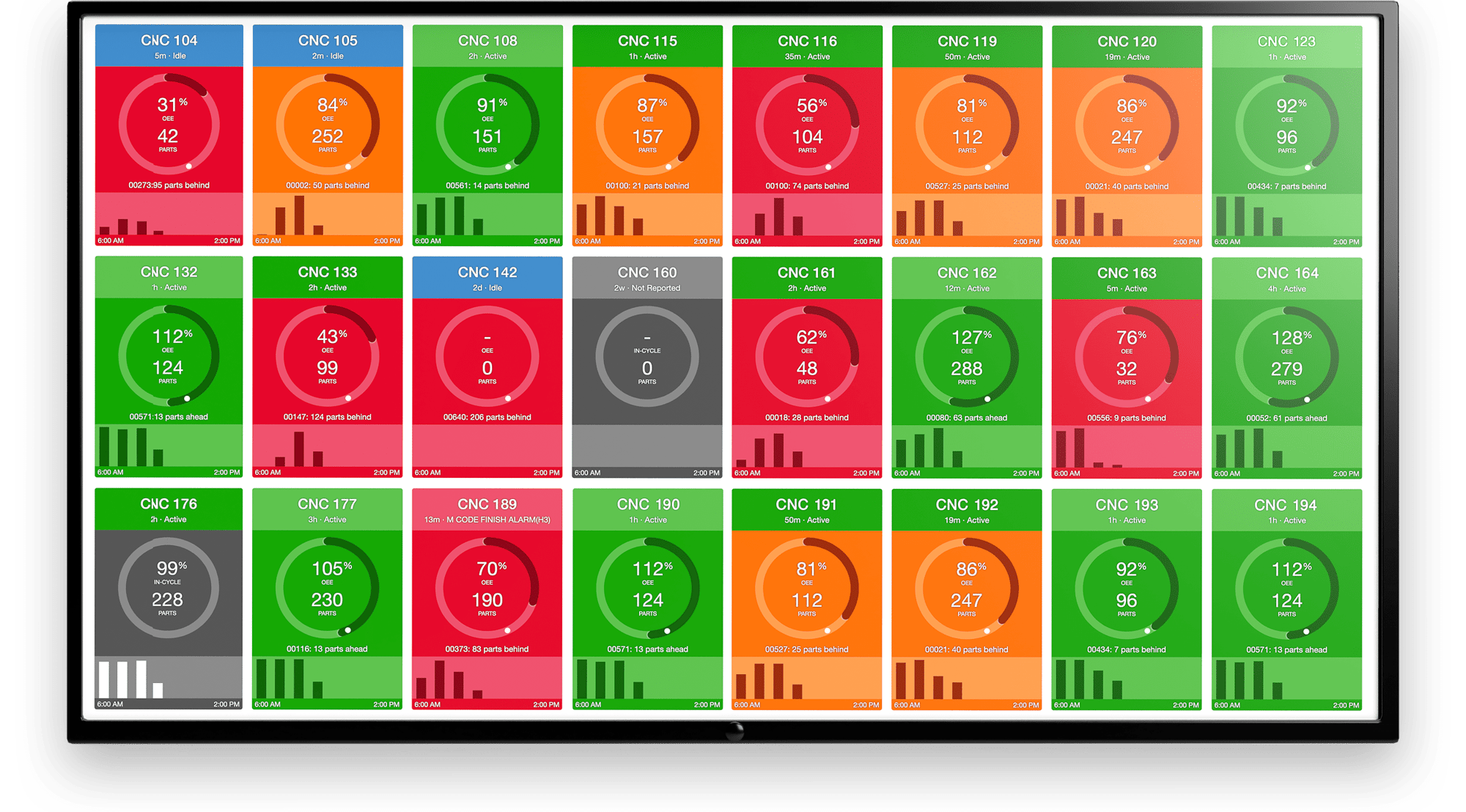
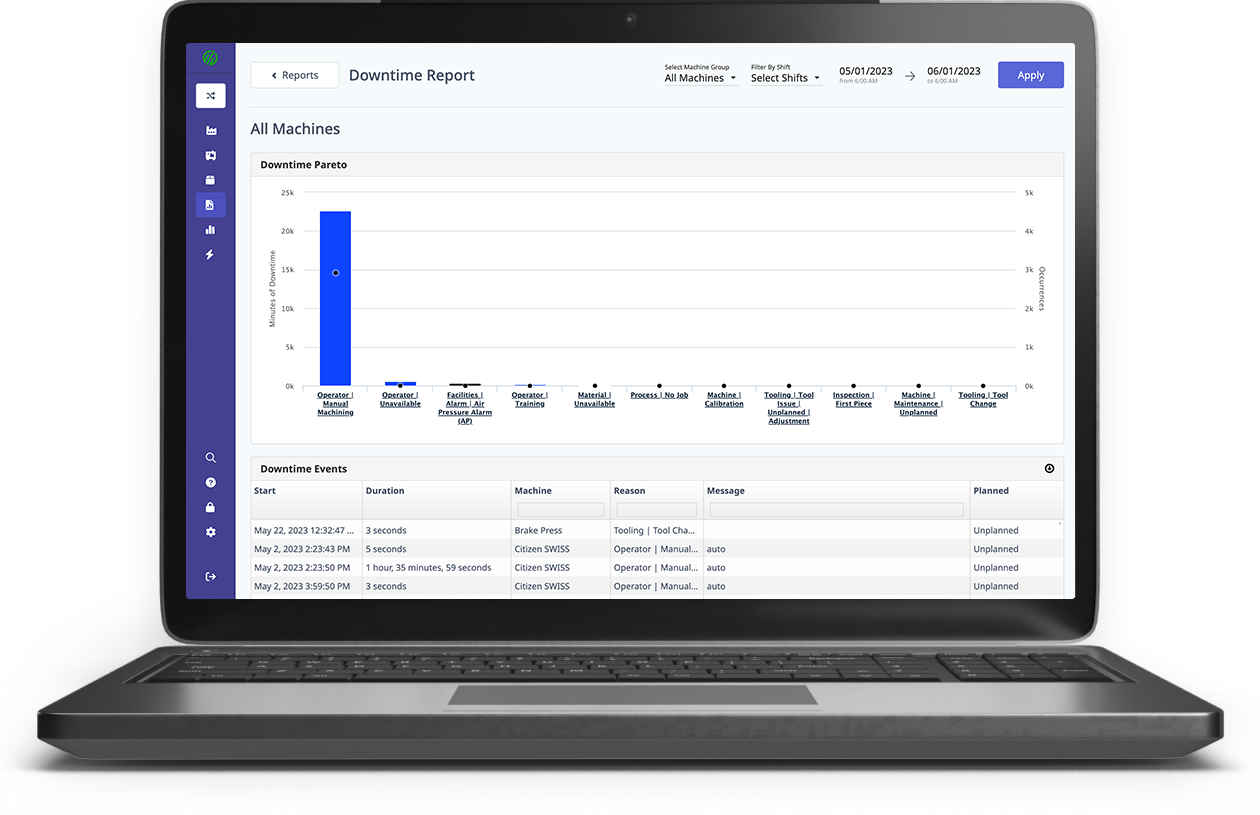
.png?width=1960&height=1300&name=01_comp_Downtime-%26-Quality_laptop%20(1).png)






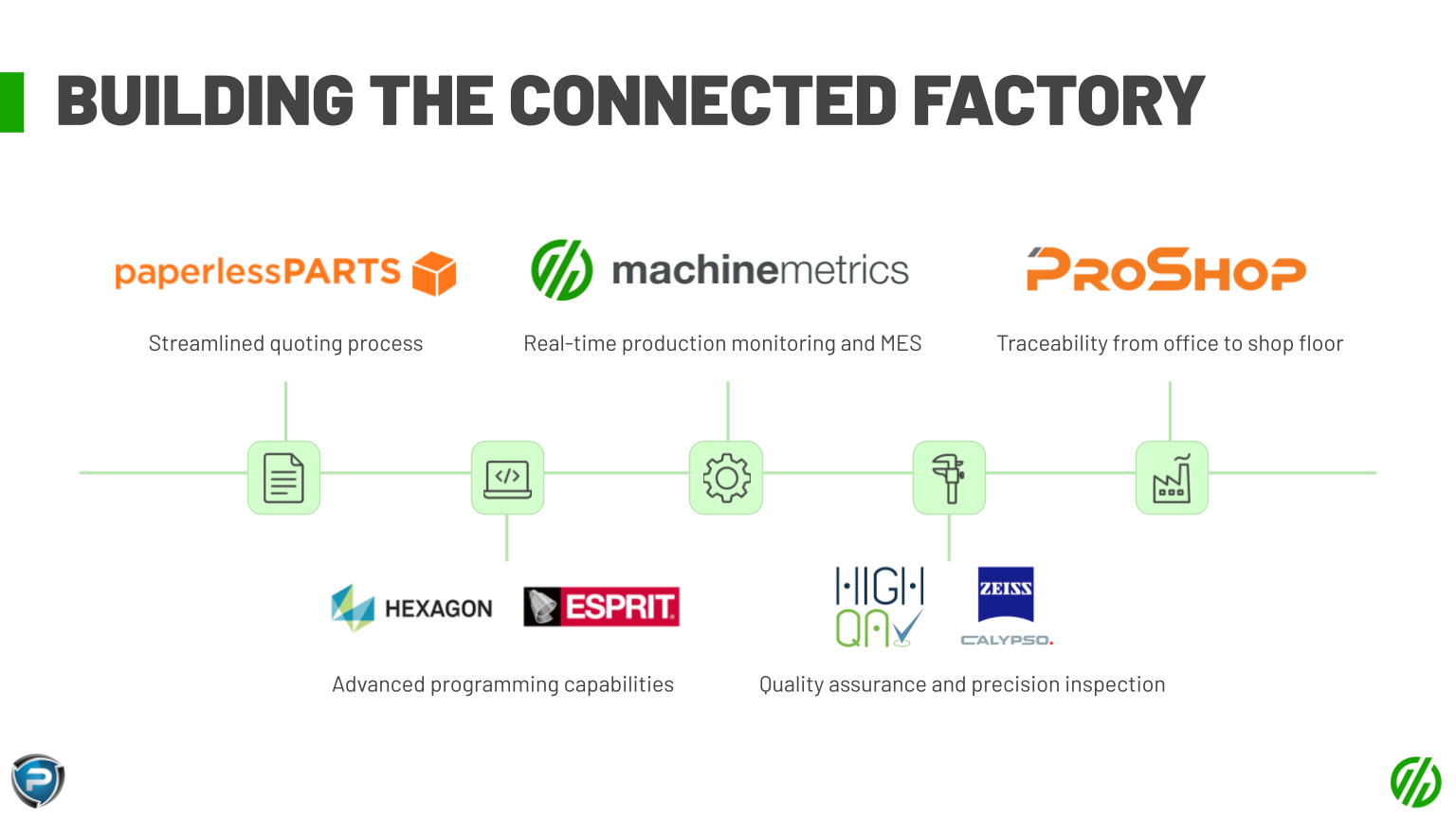
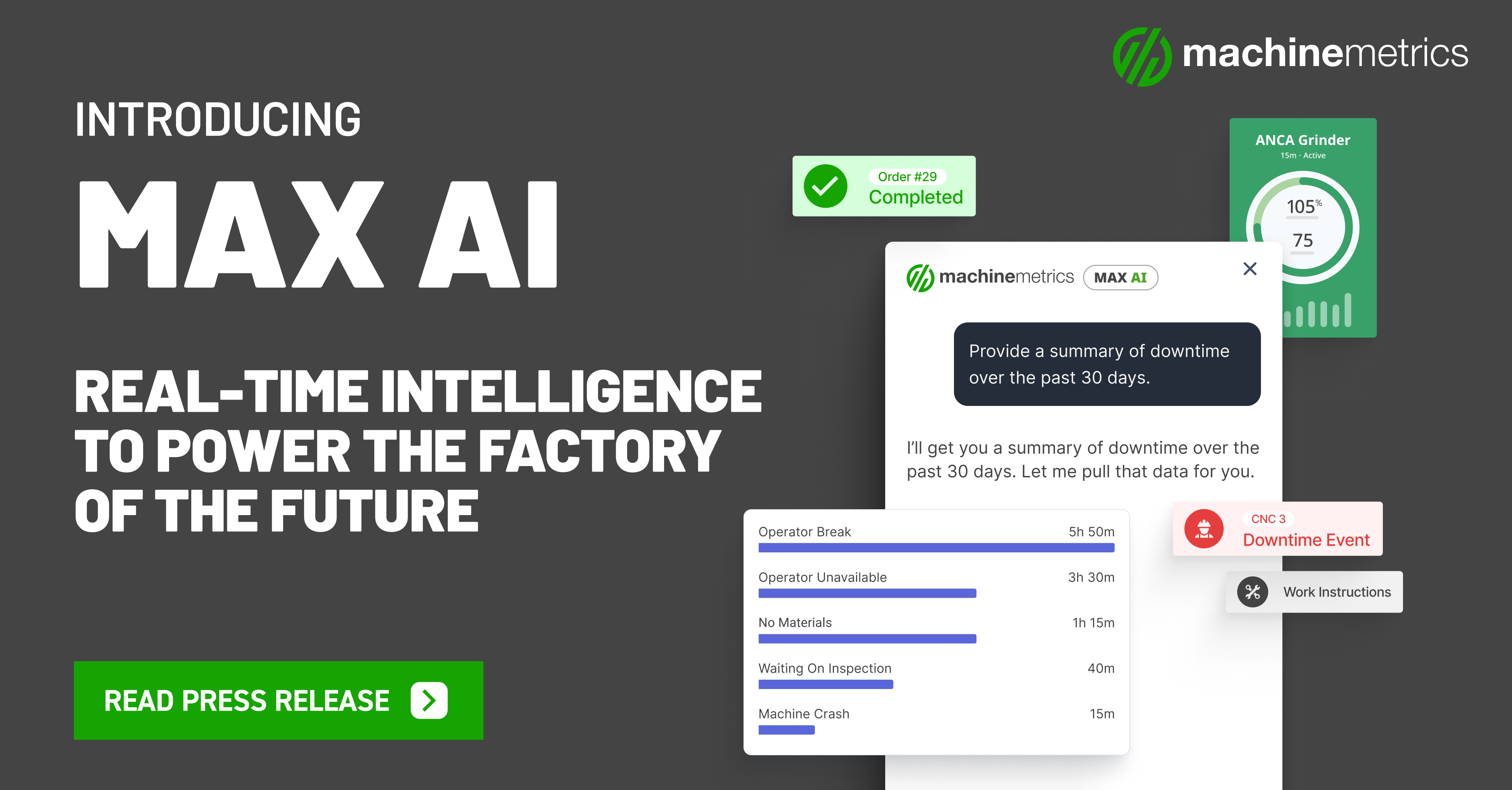






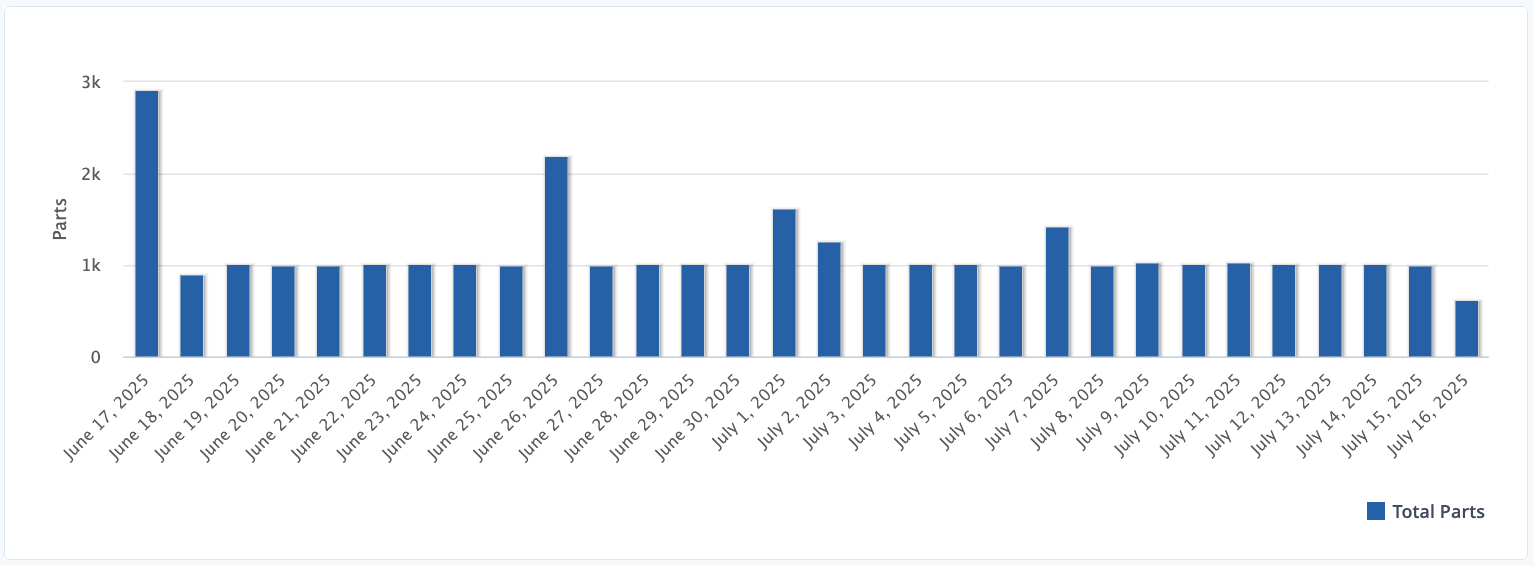

Comments